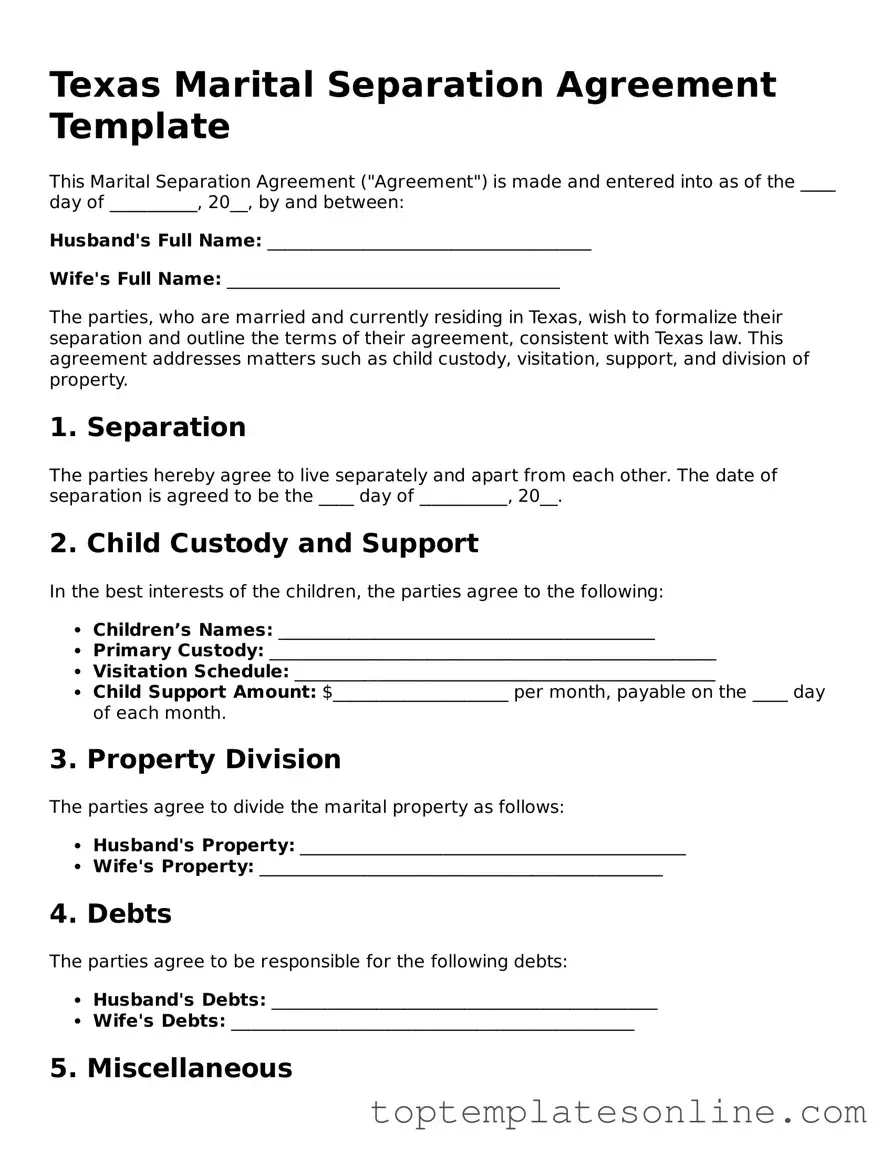Blank Marital Separation Agreement Template for Texas State
A Texas Marital Separation Agreement is a legal document that outlines the terms of a couple's separation, including the division of assets, child custody arrangements, and spousal support. This agreement serves as a framework for both parties to navigate their separation amicably and can help prevent disputes in the future. By clearly defining responsibilities and expectations, the agreement lays the groundwork for a smoother transition during a challenging time.
Customize Marital Separation Agreement Here
